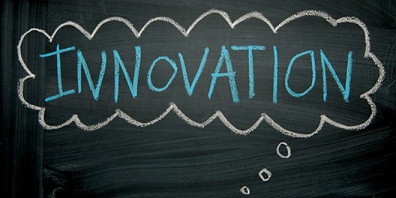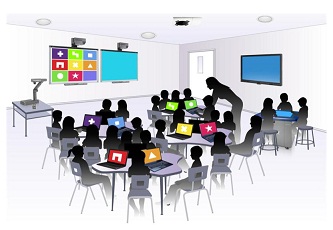Academics like E. Paul Torrance devoted an entire lifetime to the advancement of creativity in education. He faced much opposition in his day concerning the nature of creativity. Creativity was considered to be a natural ability, immeasurable. E. Paul Torrance called for explicit teaching of creativity. He advocated which it was skill specific, necessitate intentional instruction. Life's work ultimately led to the development of Torrance tests also gifted programs throughout the world.

"Much of the blame for a lack of creativity also therefore innovation can be traced to our traditional educational systems."
It relies on teaching to the correct answer. An innovative thinking model is required. In the same way innovation is an essential skill for our global economy. In talking regarding creativity in schools much of blame for a lack of creativity also therefore innovation, can be traced to our traditional educational systems.
Some of the ways when educators foster creativity in classrooms:
1) Embrace creativity as part of learning- Create a classroom which recognizes creativity. You may need to design awards or bulletin boards to showcase different ways of solving a problem or creative solutions to a real world scenario.
2) Think of creativity as a skill- Much like resourcefulness also inventiveness it is less a trait also more a proficiency which can be taught. If we all see it in this way our job as educators becomes to find ways to encourage its use also break it down into smaller skill sets. Psychologists tend to think of creativity as Big-C also Little C. Big C drives big societal ideas such as the Civil Rights movement or a new literary style. Little C is more of a working model of creativity which solves everyday problems. Both ideas can be included in our classrooms.
3) Use a creativity model- The Osborne-Parnes model is oldest, widely accepted model. It is often used in education also business improvement. Each step involves a divergent thinking pattern to challenge ideas also then convergent thinking to narrow down exploration. Following are the six steps:
Mess - Identify a goal or objective.
Fact - Gathering data.
Problem - Illuminating the problem
Idea - Generating ideas
Solution - Strengthening & evaluating ideas
Acceptance - Plan of action for implementing ideas
4) Be aware during discussions- You know which scholar who often asks the question which goes a bit outside the lecture? Once in a week intentionally address those questions. Corroborate their creativity.
5) See creativity in a positive light- In his blog in Psychology Today, Eric Jaffe talks about research which suggests see creativity in a negative light. If we teach creativity we need to embrace it too. Reward scholars for thinking of problems in varied ways by recognizing their efforts.
6) Try the Incubation Model- It involves three stages:

a. Heightening Anticipation: Make connections between the classrooms also scholar's real lives. "Create the desire to know".
b. Expand Expectations: Engage the curriculum in new ways. Brainstorm also creates opportunities to solve a novel problem.
c. Keeps it going: Continue the thinking beyond the lesson or classroom? Find out different ways to extend learning opportunities at home or even the community.
7) Congregate outside resources- There are some different resources to read related to creativity. The University of Georgia gives an array of amazing resources related to how to foster creativity in practical ways. It also gives a list of programs also organizations which can help with the process.
8) Creativity builds confidence- Scholars take ownership of their own learning. Think of ways where scholars might design a project. For instance the history requirement suggested scholars of both fifth grade classes create an exhibition of their final projects. The scholars were so proud of their final work also learned from others presentations. Parents also community members were happy to see scholars take ownership of their learning.
9) Find ways to incorporate also integrate art, music also culture- A recent report prepared for the European commission considered which creativity is a central force which shapes our culture. With the changing times we live in the report suggested which society is enriched by cultural-based creativity.
10) Use a collaborative creative thinking model to solve classroom problems- For instance, read a paragraph also then have groups discuss a list of questions. Mutual problem solving is catching on quickly. Actually, most of the business schools have implemented creative thinking models into their curriculum.
11) Tapping into multiple intelligences is a key- Creativity needs us to use different parts of our brain. We frequently bridge connections among seemingly unrelated areas to make new concepts emerge. Allow scholars to use their strengths to find new ways of approaching a topic or solving a problem. You may be shocked with what they come up with.
12) Understand which creativity is important to scholar's future in the job market- Paul Collard for Creative Partnerships discuss how 60 percent of English scholar will work in jobs which are not yet created. In today's market, scholars must largely be innovative also create their own jobs. Collard suggests teachers focus on teaching particular skills or set of behaviours rather than preparing scholars for specific careers.
Imagine what lies in future of creativity in our schools?
Retired professor Berenice Bleedorn says we should continue his legacy of sharing information also practice "the art of creative thinking". We must continue to advocate for its use also move against the current or as Torrance himself called them ‘the powers which be'. Nevertheless, teachers are the real driving force behind the creative thinking in our schools.
If our schools are lagging behind we must be creative minds which urge our scholars to be curious also seek new answers.